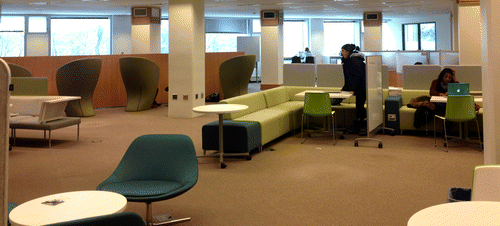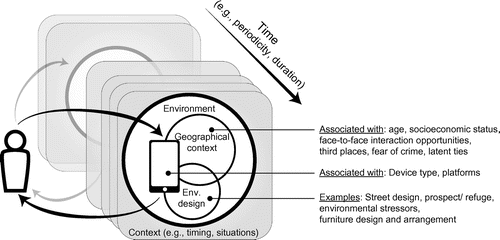Figures & data
Figure 1(a). Interaction between human and the surroundings. 1(b). Accumulated human-environment interactions over time and associated temporal patterns shapes the person’s development, based on the bioecological systems model (Bronfenbrenner & Morris, Citation2006).

Table 1. Definitions and examples of influential factors in human-environment interactions
Table 2. Boosters and barriers towards social interaction by physical contexts and screen usage aiding geographically bound social capital
Figure 2. Apartment building floor plan diagrams. Unwanted social interaction more likely occur in transient hallways in (a) than in (b).

Figure 4. Various seating options in a university library can welcome both groups and solitaries. Diverse enclosure options are likely desired in outdoor seating as well.




